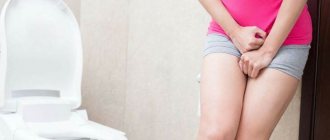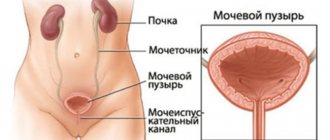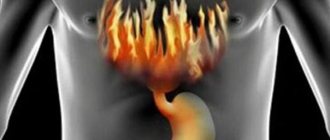What is cough incontinence?
Urinary incontinence when coughing, or in other words, stress incontinence (stress) is a condition in which involuntary leakage of urine occurs with any increase in intra-abdominal pressure: lifting weights, coughing, sneezing, playing sports.
In mild forms of incontinence, leakage may only occur during excessive, extreme exertion. In more severe cases, even normal walking or changing body position can provoke incontinence, requiring mandatory treatment.
https://youtu.be/OvkpB6o03F4
Why does the disease develop?
It is fundamentally important to distinguish between the concepts of “leakage” and “incontinence”. The latter means the voluntary release of urine before urination. Patients with urinary incontinence often occur when they sneeze or cough forcefully. When we talk about leakage, we mean residual urine output after visiting the toilet.
The causes of uncontrolled urine leakage can be various disorders in the body. These include diseases of the urinary system, neurological pathologies, and hormonal disorders. Benign and malignant neoplasms of the bladder or pelvic organs can also cause urine leakage in women and men. Treatment for this problem is prescribed after the main diagnosis has been made.
To describe the mechanism of development of pathology, one should turn to the basics of anatomy. As you know, urine is formed in the renal pelvis, after which it enters the bladder through the ureters and remains there until it is filled. The reservoir needs to be emptied when the volume of urine in it is 300 ml or more. The liquid puts pressure on the walls of the bladder, which provokes the transmission of a nerve impulse. Therefore, at a reflex level, a person feels the need to visit the toilet in the near future. If a malfunction occurs at one of the stages of the urinary process, a small amount of urine remains inside. When exposed to certain factors, it begins to leak.
View gallery
What are the treatments for urinary incontinence?
The main treatment for stress urinary incontinence is surgery. Today, the “gold standard” and at the same time the most studied operation is the installation of a synthetic midurethral sling.
Other existing methods, such as the introduction of bulk-forming substances under the urethra, Birch colposuspension, plastic surgery of the anterior vaginal wall, etc., are less effective and can lead to serious side effects, the main of which is disruption of normal urination.
| anonymously to the doctor, through the feedback form, we will try to help you. | ASK A QUESTION |
Diagnosis by cough
To make a diagnosis, a consultation with a gynecologist and urologist and an examination in a gynecological chair are necessary. During it, the doctor may ask the patient to cough - this is the so-called “cough test”. If a small amount of urine is released, it is considered positive. During the examination, smears are also taken from the vagina and cervix for microscopic examination. To exclude other pathologies in which urine retention is also poor (for example, cystitis), the doctor may additionally prescribe an ultrasound of the kidneys and bladder.
How is the operation to install a midurethral sling (TVT, TOT) performed?
This operation is performed under intravenous anesthesia. Through a small (1-1.5 cm) incision on the anterior wall of the vagina, a synthetic sling is installed under the middle third of the urethra.
https://youtu.be/xxIZK-4pYeM
The sling replaces damaged structures that support the urethra, creating the necessary conditions for urinary retention. The ends of the sling are brought out through small punctures in the skin in the inguinal folds or above the pubis. The duration of the operation, as a rule, does not exceed 10-15 minutes
How many days does hospitalization take? How is the postoperative period going?
The standard period of hospitalization is 2-3 days. The day after the operation, the doctor evaluates the effectiveness of the treatment and, if necessary, adjusts the tension of the sling, setting it in such a way as to achieve complete urinary retention without affecting the quality of urination.
This procedure is performed under local anesthesia. The ability to adjust the tension significantly reduces the risk of postoperative urinary retention and helps achieve optimal results.
What is the effectiveness of surgical treatment for urinary incontinence?
The effectiveness of the operation is up to 90%. There are diseases, the presence of which aggravates the course of the disease and can reduce the effectiveness of treatment - these are concomitant bladder overactivity (the so-called mixed form of urinary incontinence), diabetes mellitus, chronic lung diseases (COPD, bronchial asthma), chronic constipation, obesity.
In patients with a complicated form of stress urinary incontinence (urethral hypomobility, urethral sphincter insufficiency, previous pelvic surgery), the effectiveness of treatment may also be lower.
Treatment Options
Depending on the causes of the problem and the severity of the patient’s condition, treatment methods vary:
- Drug treatment. For bacterial infections, antibiotics are prescribed. Stressful urine production involves taking antidepressants. When the walls and sphincter of the bladder are weakened, the use of drugs that increase muscle tone is indicated.
- Surgical intervention. Necessary for oncology and changes in the structure of the urinary system. Patients have the tumor removed, implants installed, a special gel injected, or laser treatment of the urethra performed.
- Physiotherapy. Aimed at increasing blood flow to the pelvic organs and improving muscle elasticity. For such manipulations, microcurrents, heating or electromagnetic pulses are used.
If after urination a woman produces drops of urine, she should immediately contact a gynecologist, neurologist or urologist. The doctor will help you avoid the need to constantly use pads or diapers and promptly identify the diseases that led to the problem.
https://youtu.be/clT0zOJKehw
What are the risks and side effects of surgery?
Complications associated with the installation of a suburethral sling are extremely rare in expert clinics. Among them are damage to nearby organs (bladder, urethra, abdominal organs), trauma to large vessels, pain syndrome, functional disorders (overactive or atony bladder, difficulty urinating), discomfort during sexual intercourse, erosion of the vaginal mucosa.
In specialized centers, due to the highly qualified surgeons and the use of modern materials, the number of complications is minimized (less than 1%)
Possible diseases
You can understand that dribbling is associated with some kind of pathology by the accompanying symptoms. Depending on the disease they differ:
- Prolapse of the uterus. Most often occurs after childbirth and heavy physical exertion. Women during menopause and overweight women are also at risk. The uterus moves relative to its normal position due to weakening of the muscles and ligaments. The organ begins to put pressure on the bladder, which is why women drip urine after urinating and other urological problems arise. The menstrual cycle is disrupted and white or bloody discharge appears. A nagging pain is concentrated in the lower abdomen.
- Cystitis. Inflammation of the bladder under the influence of pathogens. Patients are bothered by a frequent urge to urinate with little urine output. The physiological fluid becomes darker and more turbid. There may be sediment or blood present. There is a burning sensation and discomfort in the lower abdomen. There is general malaise.
- Urethritis. Infection in the urinary canal area. The clinical picture includes stinging, burning and pain during urination, especially at the very beginning. There is pain in the perineum. In the morning, white or greenish discharge with an unpleasant odor bothers you. Often the disease is accompanied by other gynecological and urological disorders.
- Urolithiasis disease. The formation of kidney stones is always accompanied by severe pain. Depending on their size and location, the nature of the pain changes. It can be dull or sharp, concentrated in the lower back or radiate to the labia. The urge to urinate becomes more frequent, and cases of incontinence are common. An increase in temperature, nausea and vomiting may occur.
- Oncology. Tumors in the urethra and bladder interfere with the normal flow of urine. The appearance of neoplasms is characterized by pain, burning and stinging during urination and sexual intercourse. Blood is released from the vagina, small rashes, erosions and ulcers form on the mucous membranes of the vulva. Urethro-genital fistulas are formed.
- Urethral strictures. Pathological narrowing of the lumen of the urinary tract. Usually occurs under the influence of infections or after surgery. The disease manifests itself in the form of a small amount of urine with frequent urges. In this case, there is a feeling of incomplete emptying of the bladder, and after completion of urination, a lot of urine is released. The process of urine outflow itself begins difficultly, after some waiting and straining the abdomen. There is pain and bleeding appears.
- Diseases not related to the genitourinary system. Spinal injuries, neurological diseases and pathologies of the central nervous system lead to disruption of the conduction of nerve impulses. There is increased muscle excitability. Patients lose the ability to control their body. Therefore, incontinence occurs or urine drips after urination in women.
In terms of frequency of occurrence, cystitis ranks first even among young girls aged 15-25 years.
What restrictions exist after surgery?
As a rule, within 5-7 days after discharge from the hospital, women can return to everyday activities - going to work, doing housework. For 1-1.5 months after surgery, patients are advised to lead a gentle lifestyle: avoid lifting heavy objects, active sports, sexual activity, and also refrain from visiting saunas, swimming pools, and taking baths.
It is recommended to pay attention to behavioral habits: avoid smoking, adhere to a balanced diet, normalize body weight.
Pregnancy and childbirth
In addition to inflammatory, oncological and infectious diseases, the causes of urine leakage in women are often related to the functioning of the reproductive system.
View gallery
For example, one of the most common and influential factors is pregnancy, which is characterized by temporary circulatory disorders. An expectant mother carrying a fetus involuntarily leaks urine for the following reasons:
- Hormonal imbalance.
- Increase in the volume of the uterine cavity.
- The weight of the child exerting pressure on the urinary ducts (relevant in the last months of pregnancy).
During pregnancy, the structure of the female pelvic structures undergoes significant changes, as the mother's body prepares in advance for the upcoming birth. When the birth canal transforms, urine begins to concentrate in the urethra, so in pregnant women the release of residual fluid does not occur immediately, but several minutes after urination. This is the main symptom. The causes of urine leakage in women have nothing to do with leakage of amniotic fluid (amniotic fluid).
With a natural birth, the likelihood of developing urinary incontinence is much higher than with a caesarean section. After childbirth, the main cause of urine leakage in women is a failure in the innervation of the pelvic floor and bladder muscles. In most cases, urinary function is completely restored a few months after the baby is born. But it is important to understand that postpartum urinary incontinence is not normal if the symptom has been observed for a year or more. If measures are not taken to stabilize urination, the problem may worsen with age.
Is it possible to install a midurethral sling if I am planning a pregnancy?
After implantation of the prosthesis, you can safely plan a pregnancy and give birth through the birth canal. At the same time, the risk of relapse of the disease does not exceed 20% (regardless of whether a Caesarean section was performed or the birth was vaginal).
Bibliography
- Centers for Disease Control and Prevention. (2014). Prevalence of Incontinence Among Older Americans (PDF, 1.3 MB). National Center for Health Statistics. Vital Health Statistics; 3(36).
- Reddy, J., & Paraiso, M. F. R. (2010). Primary Stress Urinary Incontinence: What to Do and Why. Reviews in Obstetrics & Gynecology; 3(4): 150–155.
- Stewart, W. F., et al. (2003). Prevalence and Burden of Overactive Bladder in the United States. World Journal of Urology; 20(6): 327–336.
- American College of Obstetricians and Gynecologists. (2016). Urinary Incontinence (PDF, 84 KB). (link is external)
- Altman, D., Granath, F., Cnattingius, S., & Falconer, C. (2007). Hysterectomy and Risk of Stress-Urinary-Incontinence Surgery: Nationwide Cohort Study. (link is external) Lancet; 370(9597): 1494–1499.
- Gleason, J. L., Richter, H. E., Redden, D. T., Goode, P. S., Burgio, K. L., & Markland, A. D. (2013). Caffeine and Urinary Incontinence in Women. International Urogynecology Journal; 24(2): 295–302.
- Sangsawang, B., & Sangsawang, N. (2013). Stress Urinary Incontinence in Pregnant Women: A Review of Prevalence, Pathophysiology, and Treatment. International Urogynecology Journal; 24(6): 901–912.
- Kim, D. K., & Chancellor, M. B. (2006). Is Estrogen for Urinary Incontinence Good or Bad? Reviews in Urology; 8(2): 91–92.
- Health Resources and Services Administration, Agency for Healthcare Research and Quality. (2012). Nonsurgical Treatments for Urinary Incontinence in Adult Women: Diagnosis and Comparative Effectiveness (PDF, 12.9 MB). Comparative Effectiveness Review; 36.
- US National Library of Medicine. (2017). Kegel exercises – self-care.
- Institute of Medicine. (2004). Dietary References Intakes: Water, Potassium, Sodium, Chloride, and Sulfate (link is external).
- Rosinger, A. and Herrick, K. (2016). Daily water intake among US men and women, 2009–2012. National Center for Health Statistics Data Brief; 242.
- American College of Obstetricians and Gynecologists. (2017). Surgery for Stress Urinary Incontinence (PDF, 85 KB). (link is external)
- Food and Drug Administration. (2018). Considerations about surgical mesh for SUI.










